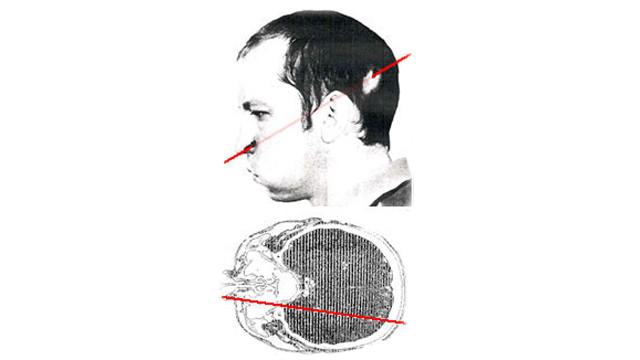Today I found out what happens when you stick your head into a particle accelerator. Exhibit A: Anatoli Petrovich Bugorski, a Russian scientist who has the distinction of being the only person to ever stick his head in a running particle accelerator. Shockingly, he also managed to survive the ordeal and, all things considered, came out without too much damage.
Bugorski was a researcher at the Institute for High Energy Physics in Protvino, working with the Soviet particle accelerator: The Synchrotron U-70.
On July 13, 1978, Bugorski was checking a malfunctioning piece of equipment. As he was leaning over the piece of equipment, he stuck his head through the part of the accelerator that the proton beam was running through. He reported seeing a flash that was “brighter than a thousand suns”, but did not feel any pain when this happened.
The beam itself measured 2000 grey as it entered Bugorski’s skull and about 3000 grey when it exited on the other side. A “grey” is an SI unit of energy absorbed from ionizing radiation. One grey is equal to the absorption of one joule of radiation energy by one kilogram of matter. An example where this is commonly used is in X-rays. For reference, absorption of over 5 grays at any time usually leads to death within 14 days. However, no one before had ever experienced radiation in the form of a proton beam moving at about the speed of light.

As you can see from the picture, the beam entered the back of Bugorski’s head and came out around his nose. Shortly after this happened, Bugorski’s left half of his face swelled up beyond recognition. He was taken to the hospital and studied as this was something that had never been seen before and so they closely monitored him thereafter, fully expecting him to die within a few days at most.
Although the skin on the part of his face and back of his head where the beam hit peeled off over the next few days and the beam had burned through his skull and brain tissue, Bugorski did not die and actually came through it all surprisingly well.
Despite the beam going through his brain, his intellectual capacity remained the same as before. The few negative health drawbacks he did experience were not life threatening either. He lost the hearing in his left ear and experienced a constant unpleasant noise in that ear from then on. The left half of his face slowly became paralysed over the course of the next two years. He also gets significantly more fatigued with mental work, though he did go on to get his PhD after this incident. The remaining side effects were occasional absence seizures and later tonic-clonic seizures, though these didn’t show up right away.

The most bizarre side effect that occurred because of this has to do with his face. Looking at Bugorski now, you’d see the right half of his face looks like a normal wrinkled old man, but the left half of his face looks as if it was frozen in time 19 years ago. Apparently Botox’s got nothing on a particle accelerator’s proton beam for stopping wrinkles.
Bonus Facts:
- During absence seizures, the person will often appear to be just staring off into space. There is no typical jerking or twitching as is associated with many other types of seizures. Absence seizure victims will often move from one location to another without purpose or thought behind it. What is happening here is, under normal circumstances, thalamacortical oscillations maintain normal consciousness of an individual; during absence seizures these are disrupted.
- A synchrotron is a cyclic particle accelerator where a magnetic field and an electric field are carefully synchronised with a travelling particle beam. The magnetic field turns the particles so they circulate; the electric field accelerates the particles.
- Tonic-Clonic seizures are more typically what most people think of when we think of seizures. During the “tonic” phase the person will lose consciousness and their muscles will suddenly tense. This typically only lasts a few seconds. During the “clonic” phase the muscles will start to contract and relax rapidly, causing the person to convulse sometimes severely.
- Bugorski went on to get his PhD after this incident and worked as a scientist for many years. In 1996, he applied for disabled status to receive his epilepsy medication free, but was turned down. He also tried to make himself available to Western researchers but was unable to afford to leave Protvino.
- Bugorski is married to Vera Nikolaevna and they together have one son named Peter.
Daven Hiskey writes for the wildly popular interesting fact website TodayIFoundOut.com. To subscribe to Today I Found Out’s “Daily Knowledge” newsletter, click here or like them on Facebook here. This post has been republished with permission.
